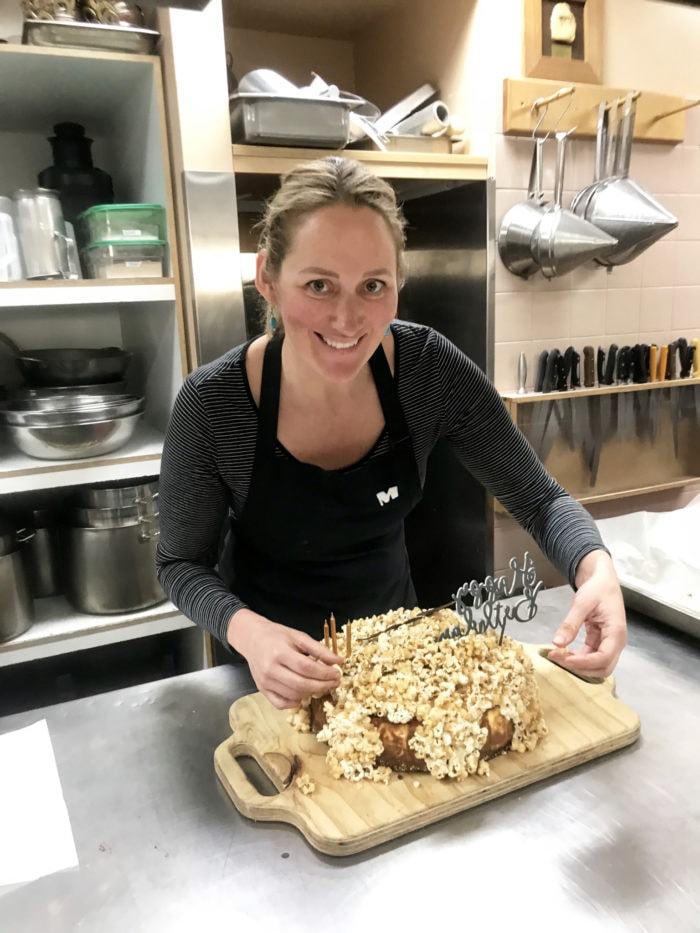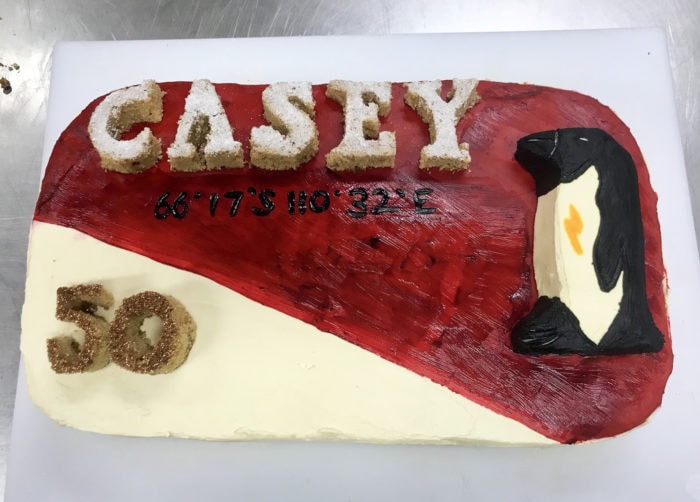What’s it like being a chef in Antarctica? Meet Jordan Smith

“ABOUT 18 YEARS ago my Dad saw an ad in the local paper for chefs in Antarctica and I first applied when I was still an apprentice,” says chef Jordan Smith. “I got knocked back at that time, as I didn’t have enough experience. But it remained in the back of my mind.”
Five years ago Jordan finally got her chance to work at Casey Station, one of three stations managed by the Australian Antarctic Division, located in the Windmill Islands, outside the Antarctic Circle.
“I came out of this as the first reserve, and then one of the other chefs broke their arm so I got to go back.” Since then, Jordan has spent four seasons working as a chef in Antarctica.
Jordan’s fourth season will be her first winter on the continent. “I think the lack of sunlight in the winter will probably be a challenge.”
Each day, Jordan wakes up at 8am to make morning tea, then lunch and dinner. She knocks off at about 6:30pm. “Being a chef down south you have to be an all-rounder and be able to turn your hand to anything.”

Casey station chef, Jordan Smith, at work in the kitchen, (Image credit: Australian Antarctic Division)
What’s the food actually like?
Being a chef in Antarctica isn’t easy. “What is in the cupboard is all I have, so if I run out of something that’s too bad.” Blizzards are another issue altogether. “It can be a challenge to get to my stores, which are in a different building. If there’s a blizzard outside, and I have to get a key ingredient, it could be impossible.”
The food at the station is similar to back home in Australia. “We try and make it home-style food, so it’s what people like to cook for themselves. A lot of it is comfort food.”
The supplies are mostly frozen, dried or canned food. There’s also hydroponics, which provides some fresh produce for meals, including fresh lettuce and herbs. “We have also just had our first batch of cherry tomatoes!”
Baking queen
Regardless that most ingredients are frozen and there’s always the potential of running out, Jordan has made name for herself as an impressive cake maker. It’s her responsibility to whip something up every time a birthday comes around.
“My passion for cooking started as a child, baking cakes, pancakes and biscuits whenever I could. During my chef apprenticeship I worked a lot in the pastry kitchens and have become known as the cake queen down here on station.”
Pavlova dripping with delicious passionfruit (canned), a Rudolf the Red-nosed Reindeer mud cake, a caramelised popcorn cheese cake, even an Antarctic sky-themed cake, Jordan has certainly earned her reputation among her the crew.

Pavlova. (Image credit: Jordan Smith/Australian Antarctic Division)

Rudolph the Reindeer Mud Cake . (Image credit: Jordan Smith/Australian Antarctic Division)

A caramel popcorn cheesecake to celebrate an expeditioner’s birthday. (Image credit: Jordan Smith/Australian Antarctic Division)

Splash of icing colour on birthday cake for an expeditioner. (Image credit: Jordan Smith/Australian Antarctic Division)

Cake to celebrate Casey research station’s 50th Anniversary in Feburary 2019. (Image credit: rdan Smith/Australian Antarctic)
The specials
Being so far from home, Jordan says it’s important to celebrate with food whenever possible. There’s a social committee that hears request from expeditioners on special occasions.
“We have special meals for birthdays, and other days like St Patrick’s Day and the Mexican feast on Cinco de Mayo.”
The biggest event is an event known as the Midwinter. “This is really the night for the chef to show off. Some chefs do degustation menus, some do plated or big family meals. I will ask the station what they want and then put together my menu.
“The food also plays a critical role in keeping morale up as well as tummies full.”
Do you want to work in Antarctica? Make sure you keep up with announcements from the Australian Antarctic Division here.




